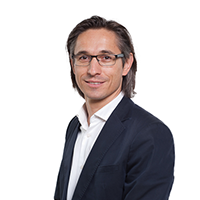AOSpine
Faculty Focus
2-2014
Content
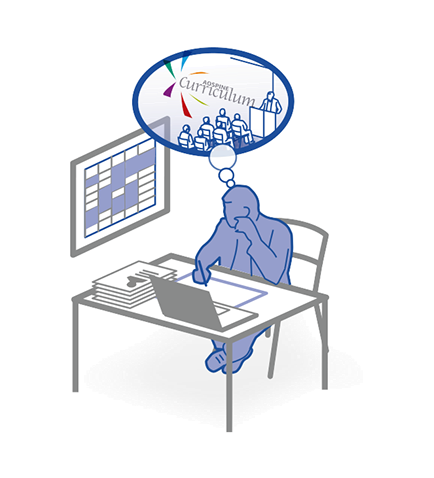
For surgeons turned faculty, the Training for Chairpersons (T4C) provides an indispensable toolbox with an interactive, step-by-step guide for successfully implementing the AOSpine Curriculum.
The AOSpine Training for Chairpersons (T4C) is all about delivery of the Curriculum
AOSpine’s latest T4C was held in Zurich, Switzerland on May 23 and 24, 2014.
The T4C aims to prepare chairpersons with an upcoming assignment at a clinical AOSpine course to deliver the AOSpine Curriculum in the most efficient manner to achieve the defined learning outcomes. Therefore the educators of the event use an interactive approach to demonstrate educational strategies and tools.
“We wanted to improve the quality of our educational events,” said Teija Lund, past AOSpine Europe Chairperson, and educator at the current T4C in Zurich, when asked about the motivation behind the T4C.
“We hope to give the participants some new ideas of what education can look like and how they can improve their courses by involving their participants and giving them constructive feedback," explained Lund, who—when not teaching for the AO—works as a spine surgeon in Finland.
Supporting guidelines
During the program the participants are also given practical tools, such as checklists and supporting guidelines that they can use when preparing for their courses.
Joseph S Green, an American expert in medical education, explained the importance of those practical tools: “One of the really important issues is how surgeons approach their chairperson role. Do they go to the meeting and just react to whatever comes or do they take control of it? In order to be prepared a tool like a checklist can be very useful and help you to proactively design your course in a way that facilitates the learning outcomes."
The T4C involves an online precourse that begins 5 weeks before the face-to-face training. As part of their online preparations the T4C participants take a self-assessment to determine gaps in their educational experience and competencies, and to learn about their motivation. This data allows the faculty and educators of the program to tailor the T4C to the needs of participants.
Thanks to the online activities, the participants of the T4C in Zurich are well prepared and during the 2-day training, participants actively engage in learning and using educational strategies to select appropriate teaching methods for their upcoming courses. The participants are taught to look for a good mix of teaching methods that fit the learning outcomes.
“This is not easy”, educator Lund admitted, “for a long time we were stuck solely with lectures, and lectures are the default for surgeons when they think of education. They think that they need to pack their courses with lectures so they can deliver as much information and knowledge as possible.”
This is why at the T4C, surgeons learn how to be more creative in their course design, for instance, by integrating case discussions or practical exercises into their courses.
Core principles
The T4C program offers the chairpersons a universal template for a successful delivery of the AOSpine Curriculum including the relevant competencies and pathologies.
But without a good team of faculty even the best curriculum cannot be implemented successfully. This is why the chairpersons also learn how to select their faculty according to the content, the learning outcomes, and the composition of their participants.
For Pakistani surgeon and T4C participant Amer Aziz the clear and concise AO methodology is one of the most beneficial take-home messages from the weekend training program: “The AOSpine programs are probably the best spine courses in the world, considering the content, the quality, and the uniformity. Every course is run as per laid down rules and methodology and that is exactly what we are taught here. To learn the latest AOSpine Principles so we can implement them in our future courses.”
The T4C provides the opportunity for professional growth and advanced learning while ensuring consistency across all AOSpine educational events. This consistency is ensured by the competency-based AOSpine Curriculum, which is organized in 6 pathologies and the 4 AOSpine Principles for spinal patient management: stability, alignment, biology, and function.
Based on the AOSpine Curriculum, a 9-point guide was established to lead chairpersons through the planning, assessment, execution, and follow up of all educational events.
Nine-step program
1. Align content to competencies and key learning outcomes: Use assessment tools to determine the target audience (masters, advanced, and principles level participants), pathologies, competencies, and key learning outcomes to specifically tailor programs.
2. Create specific learning outcomes for participant level: Incorporate knowledge, skills, and attitudes to create key learning outcomes based on the event and audience level for participants to improve.
3. Optional: Precourse self-assessment (knowledge and motivation gaps): Participant data is collected to help prepare faculty and determine varying motivation levels.
4. Effective faculty precourse meeting: Participant data is analyzed to identify implications and guide content adjustments.
5. Participate in the event and evaluate the activities and faculty: Execute delivery of AOSpine Curriculum and assess alignment of content while gathering input for future events.
6. Optional: Conduct a change of practice survey: Gather and review follow-up data to determine actual change against intended change of practice and benefit to patients.
7. Optional: Postcourse self-assessment (knowledge and gaps): Precourse questions are repeated to assess gap scores and help plan future activities.
8. Online forum (learning resources, questions): Participate in and assess the online forum offered by AOSpine discussing topics, asking questions, and sharing experiences.
9. Evaluate all data and outcomes: Compile, review, interpret, and report feedback of all data collected throughout the event.
Established reputation
At the T4C, the future AOSpine chairpersons learn how to apply the AOSpine Curriculum following the 9-step program. This strategy allows for quality assurance and communication through open channels to inform future enhancements.
The cream of the crop
There are many requirements for being assigned as an AOSpine chairperson and participating in a T4C.
Skills such as the ability to work with others, being exceptionally organized and committed to the practice, and an excellent command of the English language go without saying. But chairpersons must also demonstrate exceptional integrity and passion for their chosen field while embracing the benefits of ongoing education, learning, and development.
In addition the chairperson has to display leadership skills in order to lead events from assessment and planning to execution and follow up. Leading also entails the ability to inspire, encourage, and motivate learners and faculty.
The AOSpine T4C was created in order to identify surgeons who possess those abilities and characteristics and enable them to become a leading force in spine education.
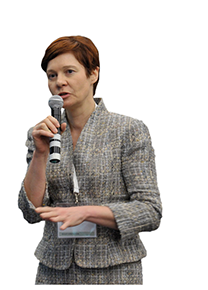
"We wanted to improve the quality of our educational events"
—Teija Lund,
ORTON Orthopaedic Hospital, Helsinki Finland
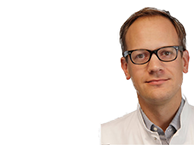
“It’s good to see how you can dissect the way of organizing an educational activity into different steps and identify methods to try to fulfill each part of it.”
—Florian Ringel,
Department of Neurosurgery, Technical University of Munich, Germany
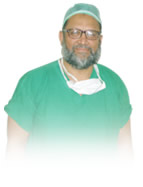
“Everything state-of-the-art is being discussed in a very interactive manner. The participants and the faculty are both speaking, asking questions, and sharing ideas.”
—Amer Aziz,
Head Orthopedic Surgeon, Ghurki Trust Teaching Hospital, Lahore, Pakistan
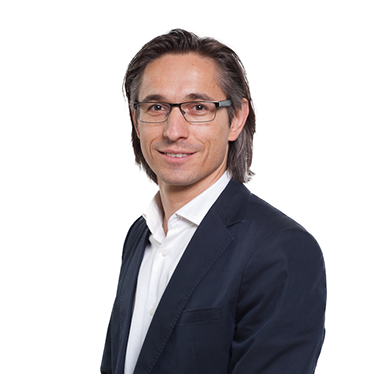
Lukasz Antolak
T4C participant Lukasz Antolak, a spine surgeon from Warsaw, Poland shared his insights and how he intends to implement what he learned.
What were your expectations for the T4C course?
I am preparing to be a chairperson for a course that will be held in Warsaw next year and I came here to improve my skills in preparing such a course, exchange ideas with more experienced colleagues, and learn from faculty that specialize in education.
What were your highlights of the T4C?
I learned how to establish the outcomes of my course and plan the course on the basis of different activities. Now I am well prepared.
Have you acquired any practical tools you did not have before?
I have learned that there are many issues that should be outlined in the process of preparing for a course, for example, choosing the faculty. When choosing my faculty, I will now consider what a person can contribute to a certain subject. I will not only think about whether the person is as a good speaker or not. And I will also consider their capacity for teamwork. Being a great speaker and a great surgeon is one thing, but if I cannot communicate with them on a certain level, it is probably not a good idea to have them in my team.
Where do you see yourself developing as a chairperson?
I am at the beginning of the road. Being a chairperson is a completely new experience compared to my previous assignments as faculty. At this point, I cannot really say how well my first chairperson assignment will go. But I will use all the tools that I got here to be as good as possible and to provide an excellent course for my participants.
Do you foresee some obstacles?
In my part of Europe, the costs of a course can be a problem. Last year 2 or 3 courses were canceled due to a lack of participants and we know the problem was the fee. It was quite high considering that the course was targeted at residents. These are the first struggles I have to overcome. The next obstacles I see are related to planning. I might try to put too much content into the course, so I need to focus on finding a good balance. Sometimes less is more.
How do you see the future of medical education?
These faculty development courses are very important. From my point of view, it is anexcellent way to expand our knowledge as teachers and a great way to raise the quality of education that we provide to the next generation of surgeons, especially in my country. We have a lot of good teachers with a lot of experience but we still do not provide as many courses as we should to ensure that the future surgeons are well trained.
___________
Lukasz Antolak is an orthopedic spine surgeon at the Dzieciatka Jezus Hospital in Warsaw, Poland. He is preparing to take on the role of Chairperson at the Advanced Degenerative Spine course in Warsaw from September 17—18, 2015.
AOSpine
www.aospine.org | education@aospine.org
Copyright © 2014 AO Foundation. All rights reserved.
